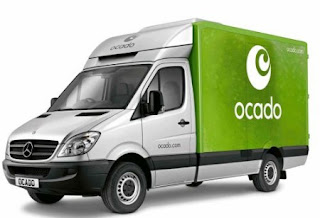As companies strive towards lower operating costs and as technology progresses, web chats have become a great way of improving customer experiences. However, as always, the simple introduction of the technology without the appropriate operating model changes can lead to disappointment and ineffective customer service.
I’ve recently had two experiences of using web chat with two large organisations. The first was with Adobe, to help out in a technical query about functionality in a certain version. The second was with Ikea, as I had encountered problems with their online planning software and was looking for help.
The experience with Adobe was a good one. It was purely text based, not cam. The level of English was fine, and the Customer Services Advisor (CSA)  answered my question very quickly. It was an enhanced experience over other channels, since she sent me a link to various Adobe sites, which were clearly easy to then access. At the end of the chat, she then moved to a subtle sales approach for me to upgrade to other software. Clearly, this channel is not easy to “push” sales down, as a customer can politely but firmly decline and halt the conversation abruptly. Nonetheless, a thought was planted about the newer software, on which I may enact another time. So not a wasted question. Overall, it was a great experience, that was seamlessly integrated into other channels. Well done.
answered my question very quickly. It was an enhanced experience over other channels, since she sent me a link to various Adobe sites, which were clearly easy to then access. At the end of the chat, she then moved to a subtle sales approach for me to upgrade to other software. Clearly, this channel is not easy to “push” sales down, as a customer can politely but firmly decline and halt the conversation abruptly. Nonetheless, a thought was planted about the newer software, on which I may enact another time. So not a wasted question. Overall, it was a great experience, that was seamlessly integrated into other channels. Well done.
The experience with Ikea was different. I had looked to use their online planning tools to think about changes to our kitchen. However, I was blocke d from downloading the software, despite turning off my firewall. So I tried to look for help on their website. Nothing. I then found their web chat for customer services. Over the next two hours, I kept receiving the message that no-one was available to take the “call”. So, I’m none the wiser as to what’s wrong.
d from downloading the software, despite turning off my firewall. So I tried to look for help on their website. Nothing. I then found their web chat for customer services. Over the next two hours, I kept receiving the message that no-one was available to take the “call”. So, I’m none the wiser as to what’s wrong.
It got me thinking. Clearly, Ikea has put in a service that is linked to UK office hours (not even their store hours, as the store would have been open), and failed to update their operating model that would allow for 24/7 service levels. Nowadays, consumer expectations have been set, rightly or wrongly, that companies set their back office functions around the world to reduce cost and always be available. Yet, when you create a channel such as web chat you instantly create an expectation with the end consumer that the channel will be available when that individual needs it, having taken away the shackles of manning a physical building. Following the sun operations are de rigueur.
I’d suggest that Ikea, who have committed to driving high customer service, have another think as to why they introduced web chat, and how they can use it to drive improved service levels. They are currently running an online survey asking how they could improve. I’ve passed the comment on.


 answered my question very quickly. It was an enhanced experience over other channels, since she sent me a link to various Adobe sites, which were clearly easy to then access. At the end of the chat, she then moved to a subtle sales approach for me to upgrade to other software. Clearly, this channel is not easy to “push” sales down, as a customer can politely but firmly decline and halt the conversation abruptly. Nonetheless, a thought was planted about the newer software, on which I may enact another time. So not a wasted question. Overall, it was a great experience, that was seamlessly integrated into other channels. Well done.
answered my question very quickly. It was an enhanced experience over other channels, since she sent me a link to various Adobe sites, which were clearly easy to then access. At the end of the chat, she then moved to a subtle sales approach for me to upgrade to other software. Clearly, this channel is not easy to “push” sales down, as a customer can politely but firmly decline and halt the conversation abruptly. Nonetheless, a thought was planted about the newer software, on which I may enact another time. So not a wasted question. Overall, it was a great experience, that was seamlessly integrated into other channels. Well done. d from downloading the software, despite turning off my firewall. So I tried to look for help on their website. Nothing. I then found their web chat for customer services. Over the next two hours, I kept receiving the message that no-one was available to take the “call”. So, I’m none the wiser as to what’s wrong.
d from downloading the software, despite turning off my firewall. So I tried to look for help on their website. Nothing. I then found their web chat for customer services. Over the next two hours, I kept receiving the message that no-one was available to take the “call”. So, I’m none the wiser as to what’s wrong.